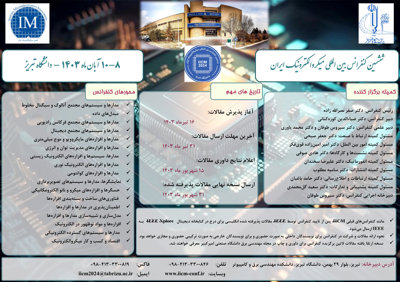0% Complete

نویسندگان :
کلمات کلیدی :
چکیده :
لیست مقالات بایگانی شده
Mahdi Alijani - Mohammadmahdi Javanmardi - Adib Abrishamifar
علی خدائی - حمید حیدرزاده - محمدعلی شکرزاده مقتدر
محمد امین ملاکی - مهناز افضلی - ابوالفضل بیجاری
Zaher Kakehbra - Khayrollah Hadidi
افشین احمدپور - امیر حبیب زاده شریف - فائزه بهرامی چناقلو
Askandar Nikzad - Mohammad Yavari - Amir Kashi
Marzieh Chegini - Mahmoud Kamarei - HojjatAllah Nemati
امیر امینی - موسی عبداله وند یاجلو - مهدی نوشیار
رضا حاجی آقایی وفایی - مهناز مهدی پور


